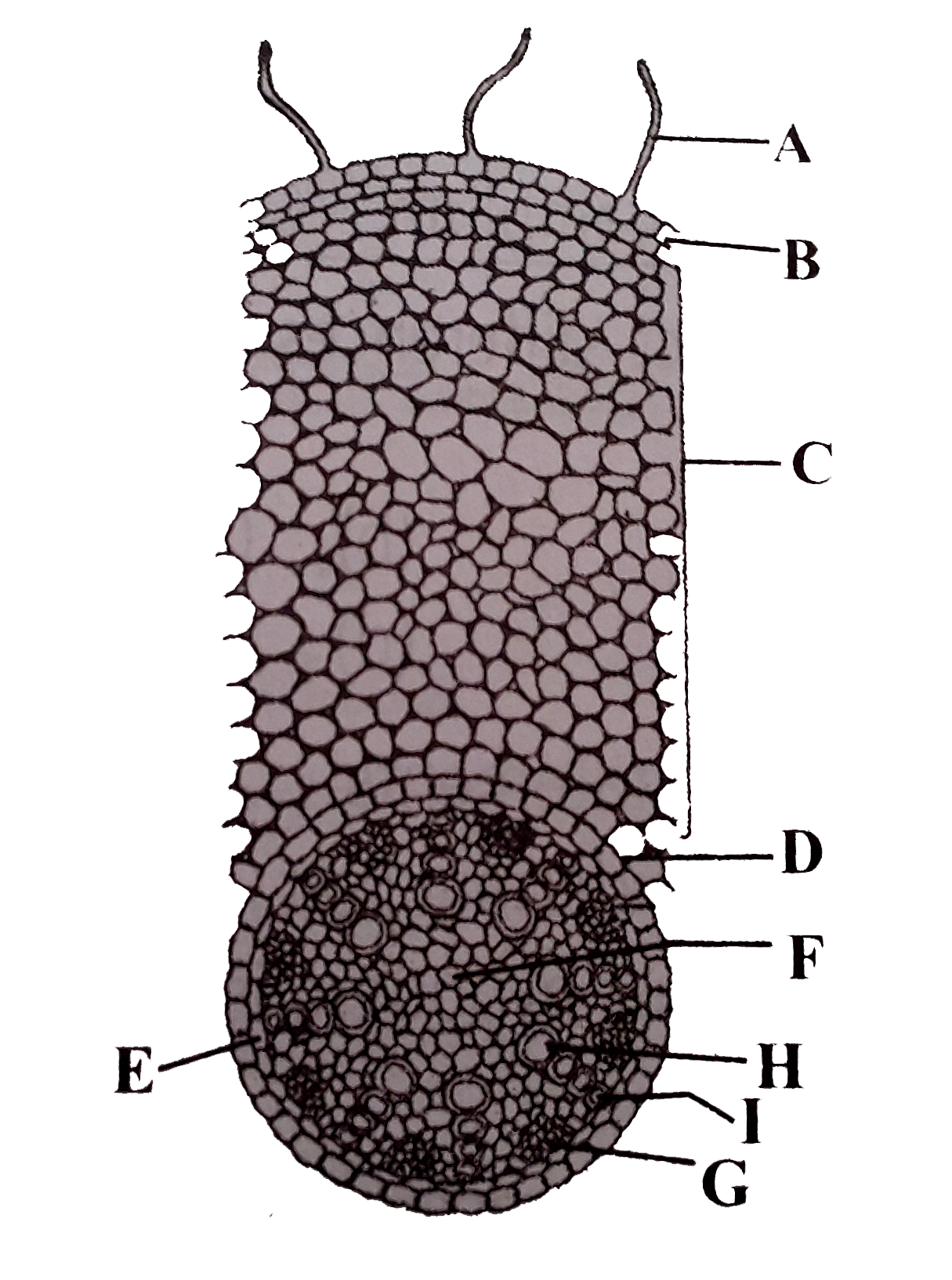Monocotyledonous stem has
Sclerenchymatous hypodermis
Scattered , conjoint and closed vascular bundle
Both a and b
None of these
The correct Answer is:C
To solve the question regarding the characteristics of a monocotyledonous stem, we can break down the information provided in the video transcript step by step.
1. Understanding Monocotyledonous Stem:
- Monocotyledonous plants (monocots) are characterized by having one cotyledon in their seeds. Common examples include grasses, lilies, and palms.
2. Identifying the Features:
- The question asks about the features present in a monocotyledonous stem. We need to analyze the options provided.
3. Option Analysis:
- Option A: Sclerenchymatous Hypodermis:
- The hypodermis in monocot stems is typically composed of sclerenchyma, which provides structural support. It is usually 2 to 3 layers thick and lies beneath the epidermis.
- This option is correct.
- Option B: Scattered, Conjoined, and Closed Vascular Bundles:
- In monocot stems, vascular bundles are indeed scattered throughout the stem and are typically conjoined and closed. This means that the xylem and phloem are found together in the same bundle and do not form a continuous ring as seen in dicots.
- This option is also correct.
4. Combining Options:
- Option C: Both A and B:
- Since both Option A and Option B are correct, this option is also correct.
- Option D: None of these:
- This option is incorrect as we have established that both A and B are correct.
5. Final Answer:
- The correct answer is Option C: Both A and B.
- Monocotyledonous plants (monocots) are characterized by having one cotyledon in their seeds. Common examples include grasses, lilies, and palms.
- The question asks about the features present in a monocotyledonous stem. We need to analyze the options provided.
- Option A: Sclerenchymatous Hypodermis:
- The hypodermis in monocot stems is typically composed of sclerenchyma, which provides structural support. It is usually 2 to 3 layers thick and lies beneath the epidermis.
- This option is correct.
- In monocot stems, vascular bundles are indeed scattered throughout the stem and are typically conjoined and closed. This means that the xylem and phloem are found together in the same bundle and do not form a continuous ring as seen in dicots.
- This option is also correct.
- Option C: Both A and B:
- Since both Option A and Option B are correct, this option is also correct.
- This option is incorrect as we have established that both A and B are correct.
- The correct answer is Option C: Both A and B.
Topper's Solved these Questions
Similar Questions
Knowledge Check
hypodermis in monocotyledonous stem is
AparenchymatousBchlorenchymatousCcollenchymatousDsclerenchymatous.Which of the following is not true for the vascular bundles of monocotyledonous stems?
AScattered in the ground tissueBPossess water-containing cavitiesCRing' arrangementDConjoint and closedSelect the incorrect statement regarding the anatomy of a typical monocotyledonous stem
APhloem parenchyma is absent.BVascular bundles are scattered , conjoint , collateral and closed .CEach vascular bundle is surrounded by a bundle sheath .DGround tissue is differentiated into cortex, endodermis , pericycle and pith .
Internal structure OF monocotyledonous stem | | Internal structure OF Dicotyledonous root
View SolutionSelect the incorrect statement regarding the anatomy of a typical monocotyledonous stem
View Solution
Transverse section of a part of a typical monocotyledonous root has been shown in the given figure. Identify the different parts (from A to I) and select the correct option.
View SolutionIn monocotyledonous stem
View SolutionRead the following option -(a) Monocotyledonous roots have fewer xylem bundles,(b) Monocotyledonous roots do not show secondary growth, (c) Dicot root has small pith.
View Solution
